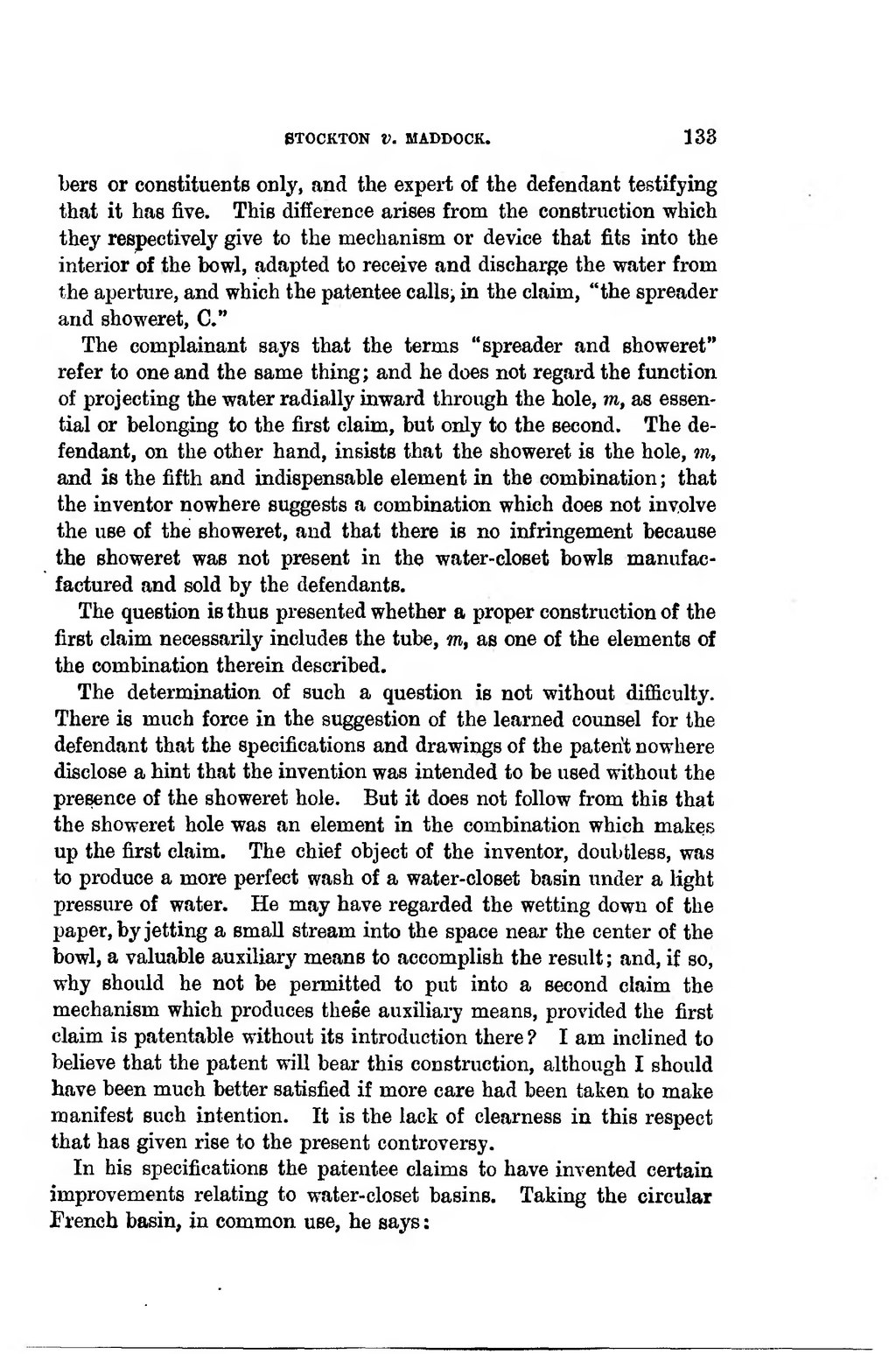8T0CKT0N V. MADDOCK. 133 �bers or constituents only, and the expert of the defendant testifying that it bas uve. This difference arises from the construction which they respectively give to the mechanism or device that fits into the interior of the bowl, adapted to receive and discharge the water from the aperture, and which the patentee calls, in the claim, "the spreader and showeret, C." �The complainant says that the terms "spreader and showeret" ref er to one and the same thing ; and he does not regard the f unction of projecting the water radially inward through the hole, m, as essen- tial or belonging to the first claim, but only to the second. The de- fendant, on the other hand, insists that the showeret is the hole, m, and is the fifth and indispensable element in the combination ; that the inventor nowhere suggests a combination which does not inyolve the use of the showeret, aud that there is no infringement because the showeret was not present in the water-closet bowls manufac- factured and sold by the defendants. �The question isthus presented whether a proper construction of the first claim necessarily includes the tube, m, as one of the elements of the combination therein described, �The determination of such a question is not without difficulty. There is much force in the suggestion of the learned eounsel for the defendant that the specifications and drawings of the patent nowhere disclose a hint that the invention was intended to be used without the presence of the showeret hole. But it does not follow from this that the showeret hole was an element in the combination which makes up the first claim. The chief object of the inventer, doubtless, was to produce a more perfect wash of a water-closet basin under a light pressure of water. He may have regarded the wetting down of the paper, by jetting a small stream into the space near the center of the bowl, a valuable auxiliary means to accomplish the resuit ; and, if so, why should he not be permitted to put into a second claim the mechanism which produces these auxiliary means, provided the first claim is patentable without its introduction there ? I am inclined to believe that the patent will bear this construction, although I should have been much better satisfied if more care had been taken to make manifest such intention. It is the lack of clearness in this respect that bas given rise to the present controversy. �In bis specifications the patentee claims to have invented certain improvements relating to water-closet basins. Taking the circulai Prencb basin, in common use, he says : ��� �
